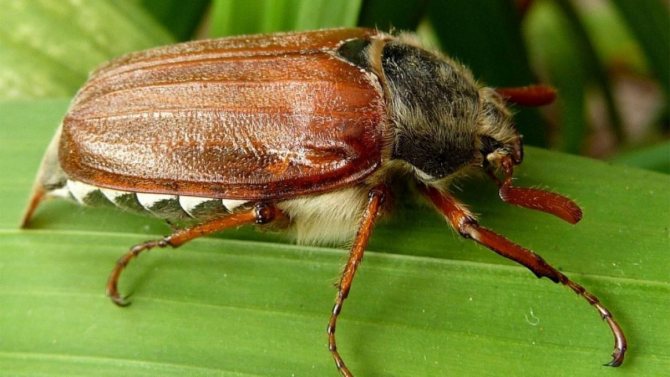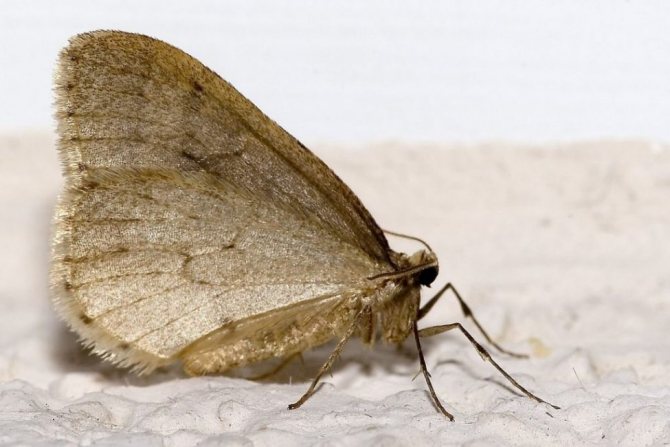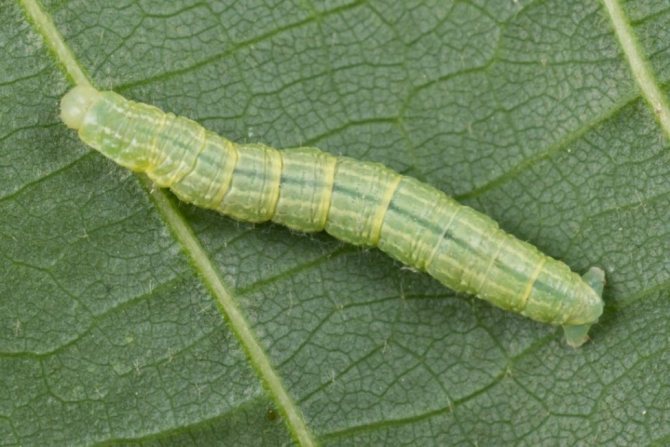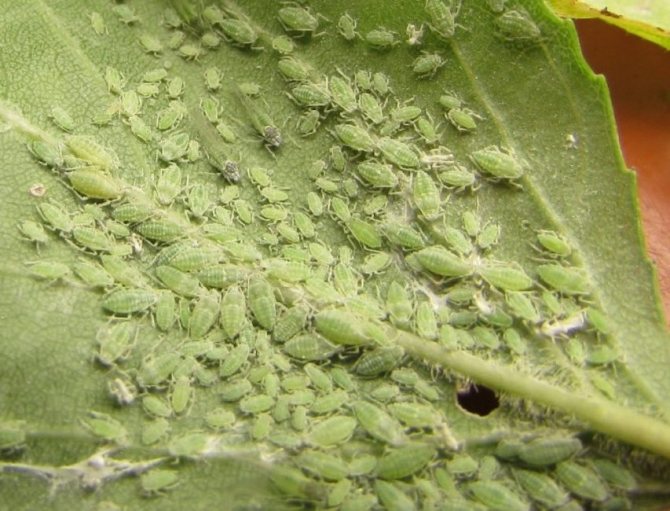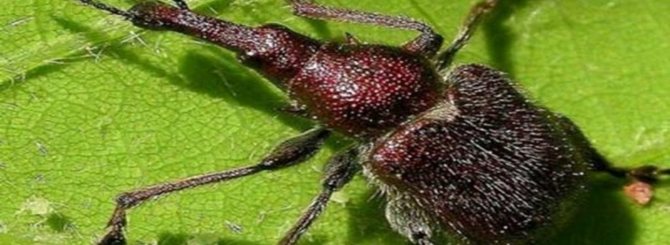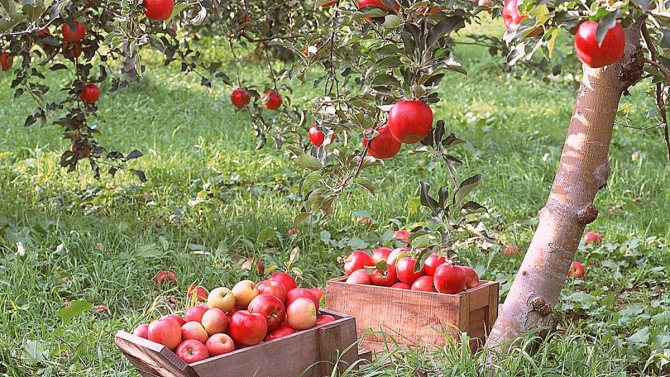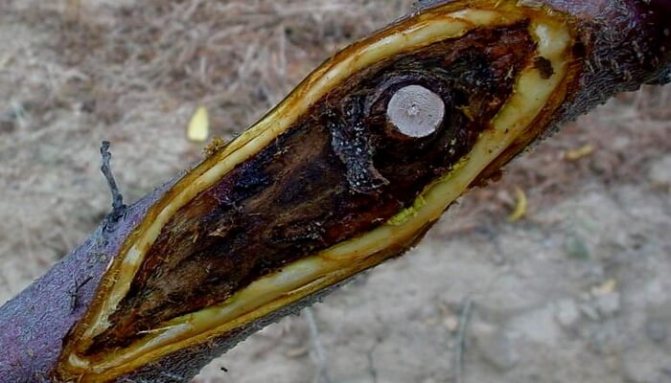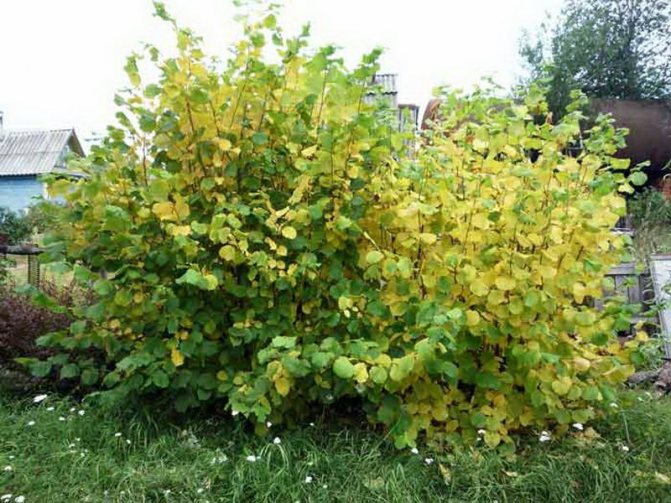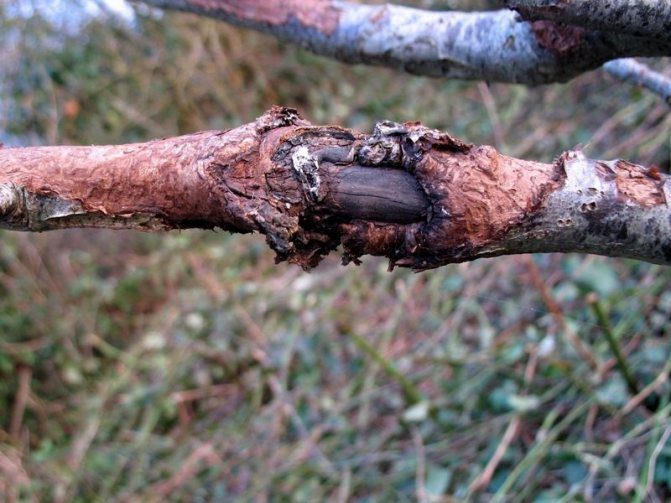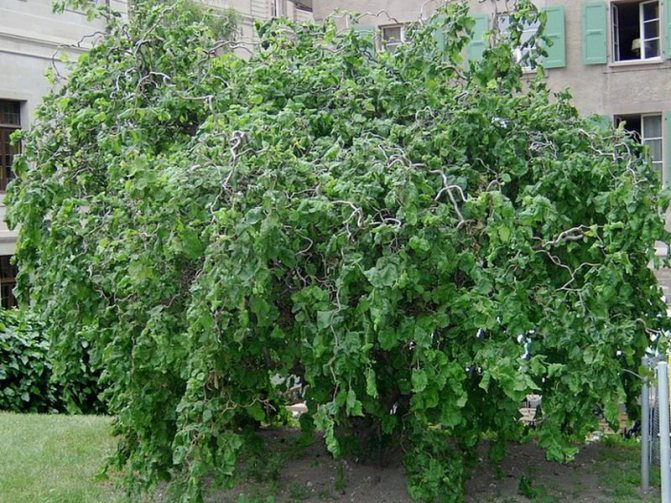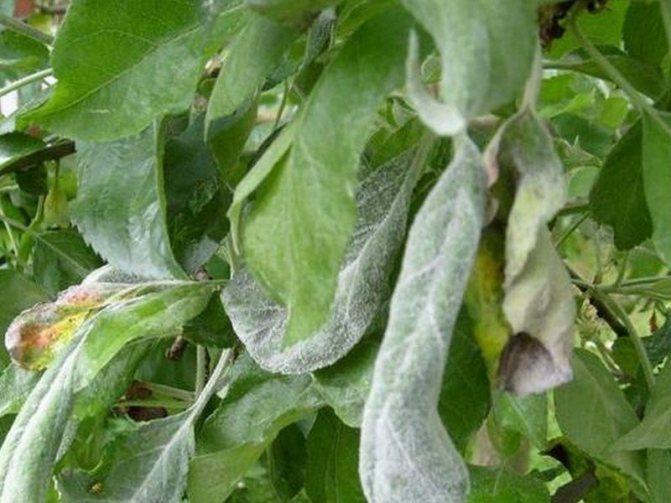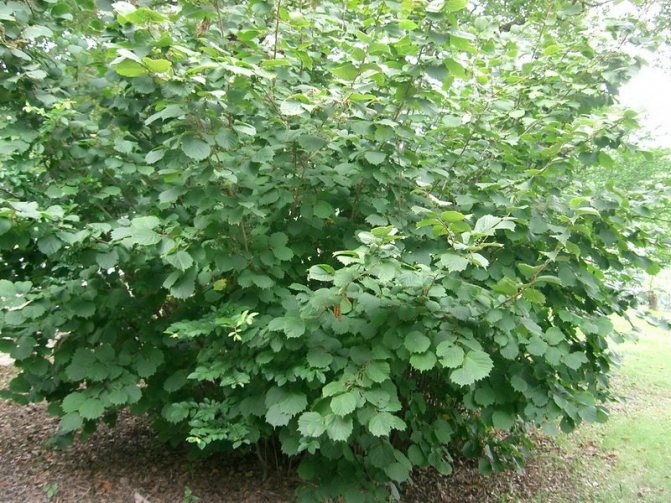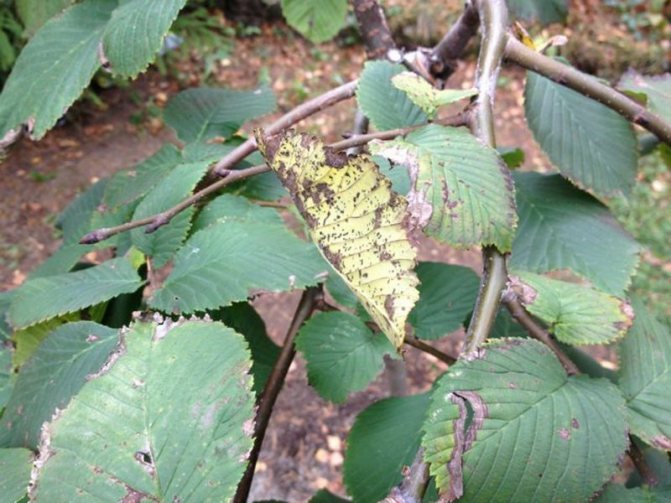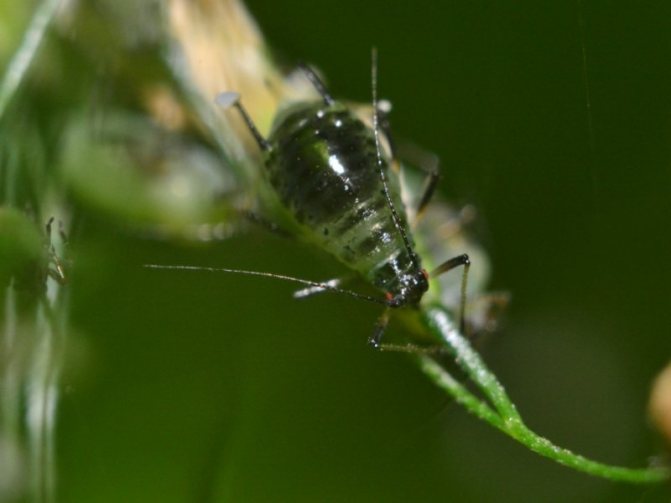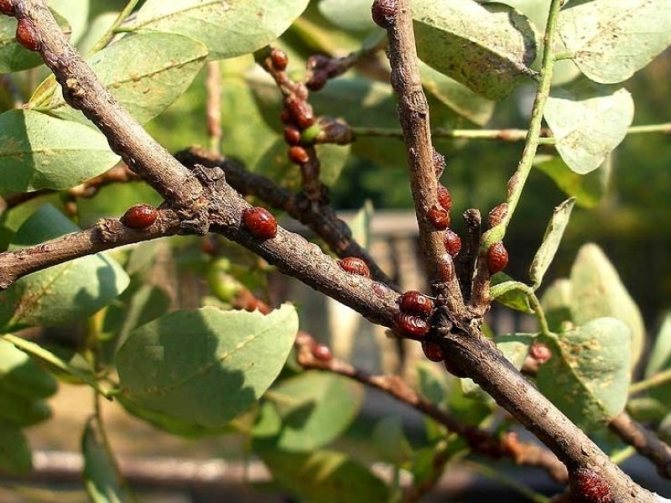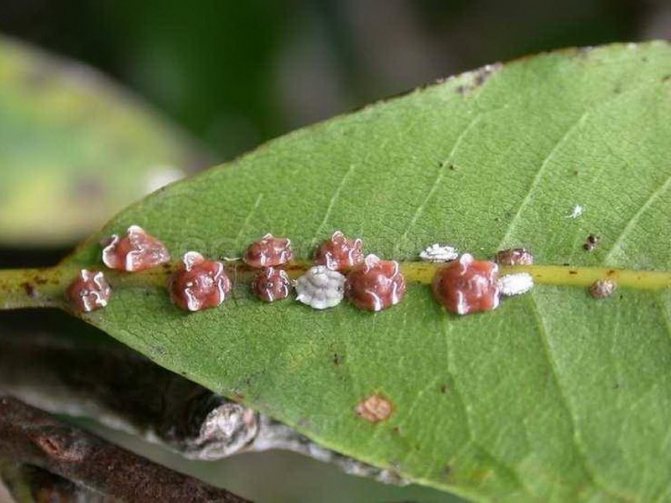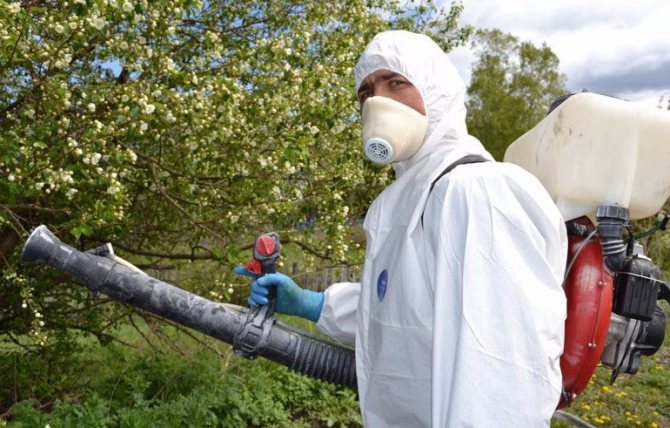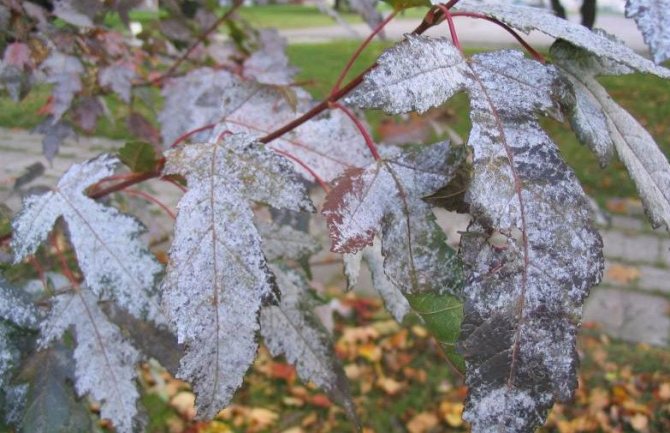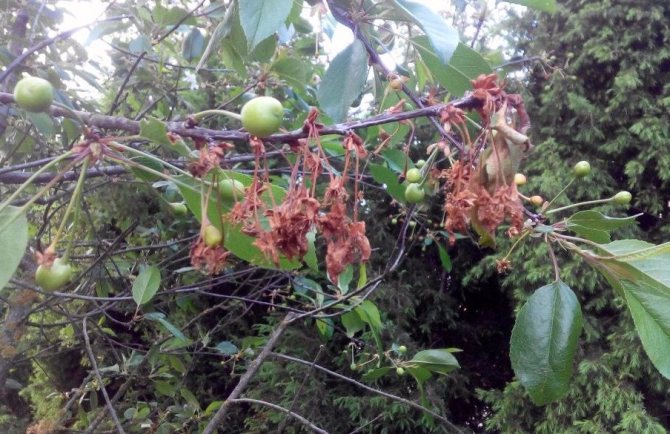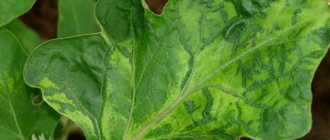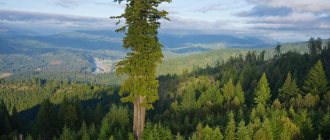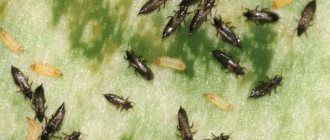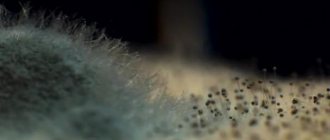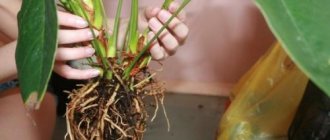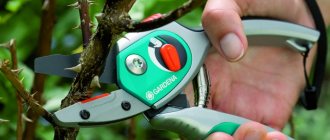Home »Garden and vegetable garden» Fruit trees
Diseases and pestsFruit treesUseful information
Fedurina Nadezhda
2 comments
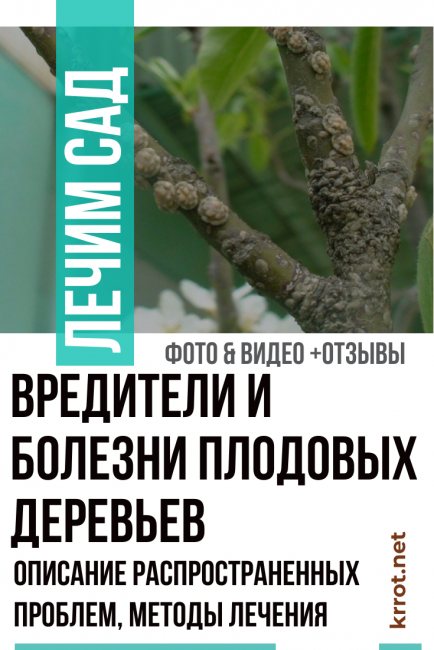
Diseases and pests of the garden
Gardeners, planting fruit and berry crops on their site, expect to receive a harvest from them. However, sometimes they are attacked by pests and diseases on fruit trees. Which can lead to a decrease in yield, and in some cases to the death of the plant. To avoid unpleasant consequences, you need to know the signs of diseases. Often, having diagnosed it at the very beginning, it is possible to save not only the affected specimen, but also those growing in the neighborhood.
- Causes of diseases
- Diseases of trees and treatments
- Fruit rot
- Scab
- Brown leaf spot or phyllosticosis
- Black cancer
- Cytosporosis
- Root cancer
- Gum therapy
- Powdery mildew
- Pests and methods of dealing with them
- May Khrushch
- Winter moth
- Aphid
- Shield
- Goose
See also: How to make garden paths in the country with your own hands? (80+ Photo options for great ideas) + Reviews
Apple and pear scab
One of the most dangerous diseases. The causative agents of the disease are two types of fungi, similar in morphology and biology, but strictly “belonging” to their host plant. The causative agent of the scab develops only on the pear, and the causative agent of the apple scab - only on the apple tree.


Mushrooms infect leaves, fruits, less often shoots. Vague oily spots form on the leaves. Later, they acquire a gray color and are covered with a greenish-brown velvety bloom of sporulation. Severely damaged leaves dry up and fall off. The same spots appear on the fruits, but sharply limited, often with cracks. With early lesions, the fruits become one-sided. On the shoots, especially pears, spots form, on which the diseased bark then swells, cracks and flakes.
Scab pathogens overwinter in fallen leaves, and on a pear - and on young damaged shoots. In spring, the mushroom forms black spherical fruiting bodies, in which the ascospores ripen. After rain, abundant dew or fog, ascospores are thrown out of the fruit bodies and carried by the air current. Throwing out of ascospores occurs repeatedly and coincides with the period from the separation of the buds to the end of flowering. Getting on young leaves (or pear shoots), the spores germinate, forming a mycelium, which penetrates into the tissue of the leaves (or pear shoots). These are primary infections. A prerequisite for the germination of ascospores and their infection of plants is the presence of droplet-liquid moisture, therefore the disease develops more intensively in years when rain, dew or fog often fall in the spring. Young growing trees are most susceptible to scab. The first signs of scab appear before or shortly after flowering.
On the affected green leaves, the fungus forms conidiophores, invisible to the eye, with conidiospores on them. Conidiospores are carried by the wind and infect healthy leaves and fruits (secondary infections). During the summer, the fungus develops in several generations.
The following apple varieties are strongly affected by scab: Simirenko, Delicious, Starkrimson, Korey, Melba, Borovinka, Mikentosh. Average affected varieties: Jonathan, Idared, Pepin Lithuanian, Superprekos, Red Delicious.The varieties are slightly affected: Parmen winter gold, Calvil snow, Spartak, Janared, anise Kubansky, Welsey, Wagner. Of the pear varieties, winter Michurina is resistant to scab, Forest beauty, Tonkovotka are strongly affected.
Control measures. Collecting and burning, composting, or burying leaves in the fall after leaf fall. Spores are not formed in the leaves covered with earth. It is recommended to dig up the soil in the fall with a careful incorporation of fallen leaves.
Thinning of the thickened crown of trees. Good crown ventilation is unfavorable for scab development.
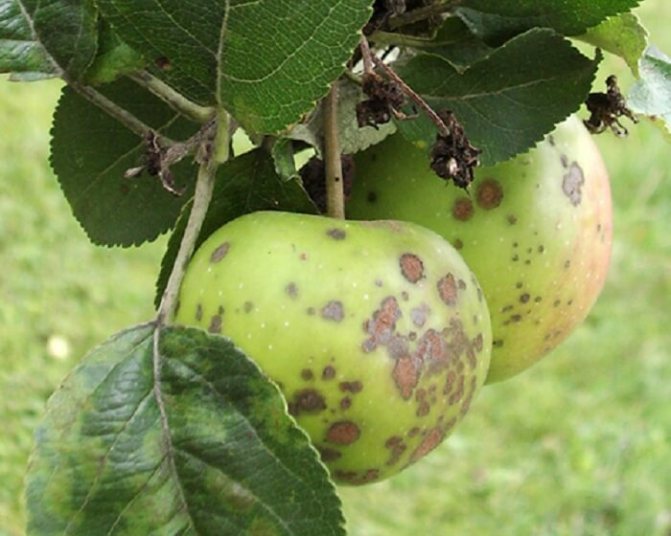

Effectively spraying apple and pear at the beginning of bud opening (along the "green cone") 3-4% Bordeaux liquid or in the phase of bud separation with 1% Bordeaux liquid. After flowering, the trees are sprayed with 1% Bordeaux liquid or its substitutes (copper oxychloride, polychoma). 18-20 days after flowering, the apple tree is again sprayed with copper oxychloride, polychoma, Vectra or speed preparations.
Fire or boiling water treatment (physical destruction of pests)
The paper is twisted with a tube, set on fire and quickly carried along the tree trunk up to 2 m in height, the shrubs are burned completely. The boiling water treatment is carried out evenly over all branches, being careful not to burn the buds.
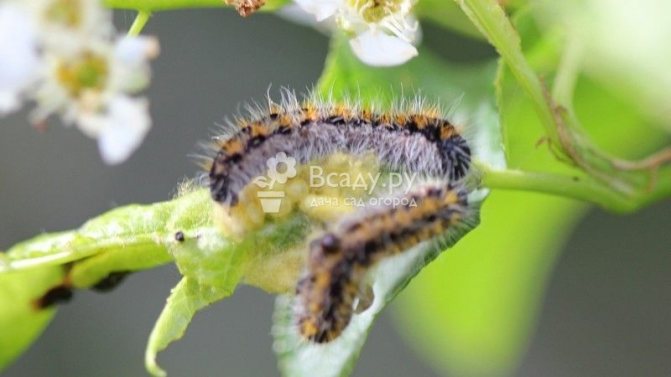

Pests of ornamental plants
Particular attention should be paid to the northern side, on which insects often lay eggs. When scalding, cover the soil with plywood to protect the roots. For best efficiency, salt or ready-made manganese garden mixtures can be added to the water.
Fruit rot, or moniliosis of apple and pear
It affects fruits, inflorescences and shoots of apple and pear.
The fungus hibernates in mummified (shriveled) fruits on the soil surface or on tree branches, in affected shoots and branches. In the spring, spores form on such fruits. They are carried by the wind, causing primary infections. On the affected fruits, brown spots (rot) are formed, capturing the entire fruit over time. The spots develop white spore pads arranged in concentric circles. Wind-blown spores infect healthy fruits (secondary infection). By autumn, the affected fruits are mummified, most of them fall off, and some remain on the branches. Affected flowers and leaves turn brown and wither, but do not crumble. In humid weather, they also form grayish spore pads. The tops of the affected shoots dry out, the bark in the affected areas turns brown, shrinks, cracks.
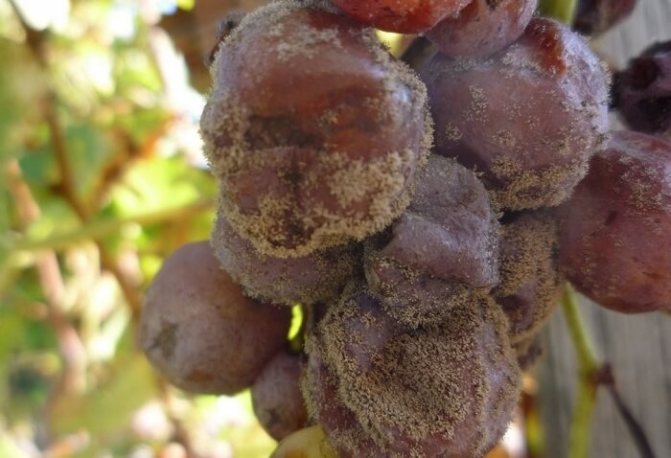

Over the summer, the mushroom develops in several generations. The increased humidity favors the germination of spores. Fruits with mechanical damage (for example, leaf rollers, weevils, etc.) are more often affected. Once in the wound on the fetus, spores germinate even without the presence of drip-liquid moisture.
Control measures. Cutting and burning after flowering of the affected shoots. Regular collection and destruction of fallen affected fruits. Collection from branches in autumn or winter and destruction of mummified fruits. It is not recommended to store fruits with mechanical damage. Spraying of trees is carried out with the same preparations and at the same time as against scab.
Apple powdery mildew
The fungus infects leaves, shoots, flowers and fruits of an apple tree, sometimes pears.
The disease manifests itself soon after bud break.
Mycelium overwinters in buds, on affected branches, sometimes on leaves. In spring, the mycelium passes from buds to blossoming leaves, flowers, shoots, where it forms conidia, spread by the wind. In the fruiting bodies (perithecia) that overwintered on the branches, ascospores develop, which are thrown out after rain and infect other plants.


On the affected parts of the plants, a white felt bloom of mycelium with numerous black dots of fruit bodies appears.Affected shoots lag behind in growth, their tops dry up, leaves curl and die off. Sick fruits are delayed in growth, often fall off, a rusty mesh and cracks appear on their skin.
Dry and hot weather contributes to the development of the disease. In winter, at a temperature of -20 ... -23 ° C, the mycelium dies. Varieties susceptible to the disease: Renet Simirenko, Jonathan, Mekintosh.
Control measures. Pruning and killing affected shoots in autumn or early spring. Timely watering and soil cultivation. The grower should avoid applying large doses of nitrogen fertilizers. Spraying of plants with azocene or colloidal sulfur is recommended. With a significant development of the disease, spraying is carried out at least three times: during the isolation of the buds, immediately after flowering (75% of the petals fall off), the third - two weeks after the second.
The relationship of diseases
Often, non-communicable diseases contribute to the infection of woody plants with infectious diseases and a decrease in resistance to them. So, through frost wounds and sunburns, fungi and bacteria penetrate into the trunks and branches of trees - pathogens of rotten, cancerous and necrotic diseases.
A frost crack on an oak trunk
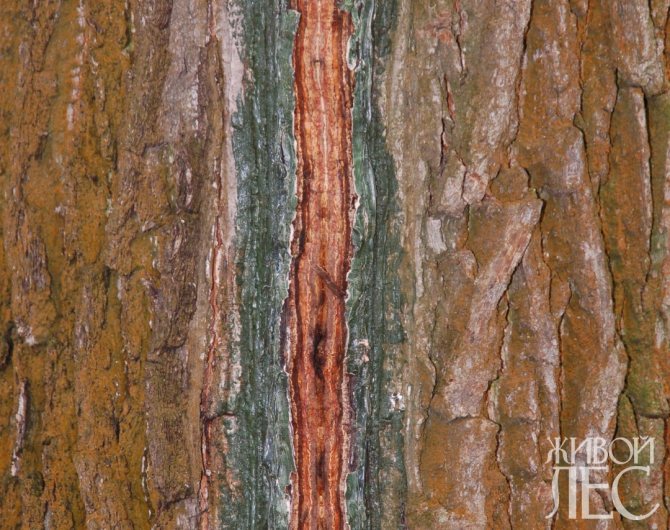

Frostbite
Many deciduous trees, especially young plantings, weakened by unfavorable environmental factors (drought, frost, pollution with pollutants), are often affected by tubercular and cytosporous necrosis of fungal origin. Air pollution with sulfur dioxide (SO2) reduces the spruce's resistance to fungal diseases such as schütte.
In turn, infectious diseases weaken the resistance of woody plants to the effects of wind, low temperatures, excess or lack of precipitation. So, root rot leads to windfall of trees, cancerous diseases - to windbreak of trunks, piles of snow - to snow-capped branches, damage to young shoots with powdery mildew - to frost damage.
Diseases of various origins cause significant harm to both individual trees and entire plantations. They lead to the weakening and drying out of woody plants of different ages, a decrease in the yield of standard planting material, the quantity and quality of commercial timber, partial or complete loss of decorative plants in cities and towns, and the loss of the protective functions of trees and shrubs.
________________________________________________________
Why frosts are dangerous for trees
Frost not only causes significant damage to trees, but can even cause their death. Such cases are possible when climatic conditions deviate from the norm.
Black cancer
Fungal disease of the bark of branches and trunks of apple, pear, apricot and other fruit crops. A brown spot first appears on the bark, its edges thicken. Then the bark in this place dies off, cracks and peels off, exposing the wood. Dead bark and wood turn black, black fruiting tubercles of the fungus appear on them. Leaves and fruits are also affected.
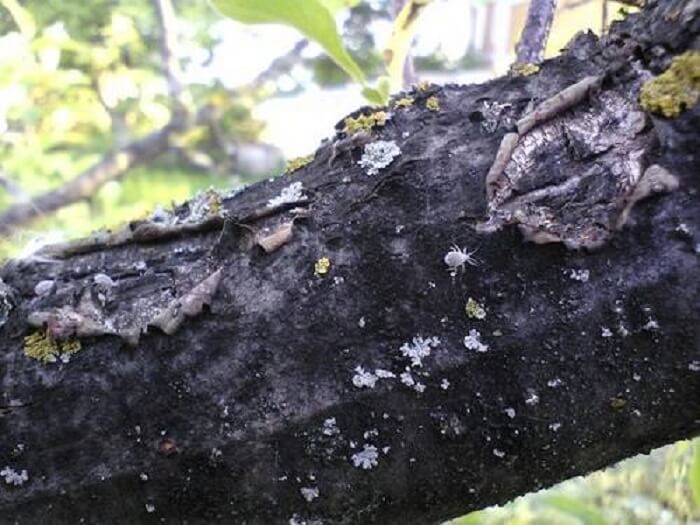

The fungus hibernates in the affected bark. Its spores disperse and infect trees throughout the warm season. Infection is favored by the presence of cracks and mechanical damage to the bark. Old and weakened trees that do not receive proper care are more often affected.
Control measures. First of all - pruning and burning affected branches, uprooting and burning trees that died from black cancer. Digging the soil, applying fertilizers, and timely watering contribute to the growth of trees and increase their resistance to disease. It is very important to protect trees from mechanical damage, as well as to treat wounds by stripping diseased bark and wood to healthy tissue, followed by disinfection of the wounds with a solution of copper sulfate and sealing with garden pitch.
How to cure a garden
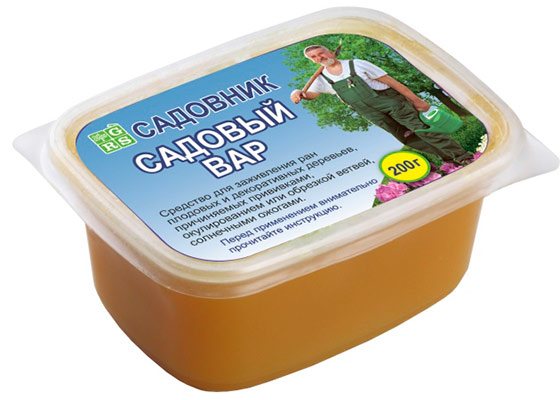

Not all of these diseases are curable.But the methods of treatment for most of them, of course, exist, including sometimes you can do with folk remedies.
- Sick fruits, as well as all affected ones, as in the photo, shoots and buds, must be carefully removed. It is best to cut off the branches on which they were located. The bark is also carefully peeled off the wood.
- The cut zone is cleaned and processed with a 1-3% solution of copper sulfate.
- But in some cases, for example, when getting rid of gum flow, after vitriol, the cut is rubbed with fresh leaves and additionally covered with a mixture of nigrol and oven ash, taken in proportions of 7: 3
- Then the treated wood wounds must be covered with garden varnish.
- And after harvesting, the garden is additionally treated with a solution containing copper.
- Timely spraying of trees with fungicides and other drugs treating the disease is imperative (which depends on each disease)
Compliance with these general rules greatly increases the chances of fighting the disease. And then there is a high probability that the plant will overwinter favorably and next year there will be no re-infection and crop death.
Marina Makarova
Leaf spots
Brown spotting (phyllostictosis) causes the formation of brown spots on the leaves of apple and pear, often merging with each other. Fruit bodies develop on the affected tissue in the form of black dots. Healthy leaves are infected with spores. Mycelium overwinters in fallen leaves. In the spring, spores form on them, infecting young leaves and shoots.


White spot (septoria) of pear appears on the leaves in the form of small but numerous white spots. Spots can coalesce, causing leaves to dry out and premature leaf fall. Fruit bodies with spores develop on the spots of diseased tissue. The latter infect healthy leaves throughout the summer. The mushroom overwinters on fallen leaves.
Cercosporosis of stone fruits: the fungus forms reddish-brown spots on the leaves. The diseased tissue dries out, falls out, holes form in the sheet.
Plum red spot: The fungus forms bright orange spots on the leaves. Sick leaves dry out and fall off.
Cherry brown spot. The fungus causes the formation of small brown spots with a dark rim on the leaves.
Spot control measures. Careful collection and destruction of fallen leaves in autumn as a source of primary infection of trees in spring, digging up the soil in autumn with careful incorporation of plant residues. Effectively spraying trees with 3% Bordeaux liquid on the "green cone". Spraying during the budding period with 1% Bordeaux liquid, copper oxychloride, polychoma or foundationol during the budding period.
Peach leaf curl
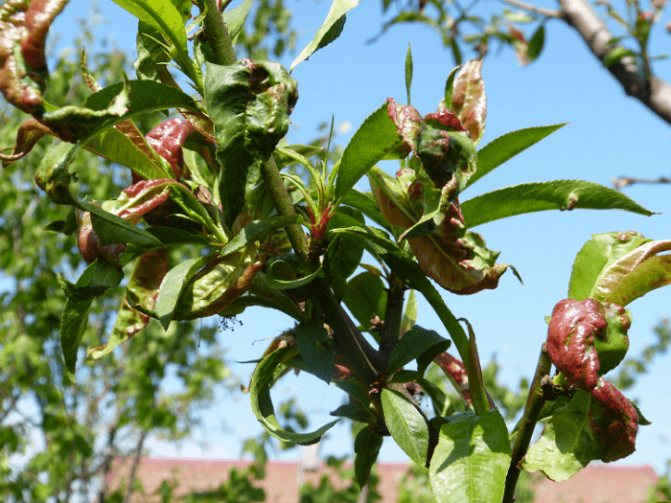

The fungus infects leaves, growing shoots, sometimes flowers and peach fruits. Leaves curl, wrinkle, become pale or slightly reddish in color. Then they turn brown and fall off. A grayish bloom of sporulation appears on them. Affected shoots are delayed in growth, swell, and curly leaves grow on them. Later, the shoots die. The mushroom hibernates on kidney scales. Infection occurs during bud break.
Control measures. Spraying with copper sulfate during swelling and budding. Before flowering - spraying with 3% Bordeaux mixture. Pruning and destruction of affected shoots.

